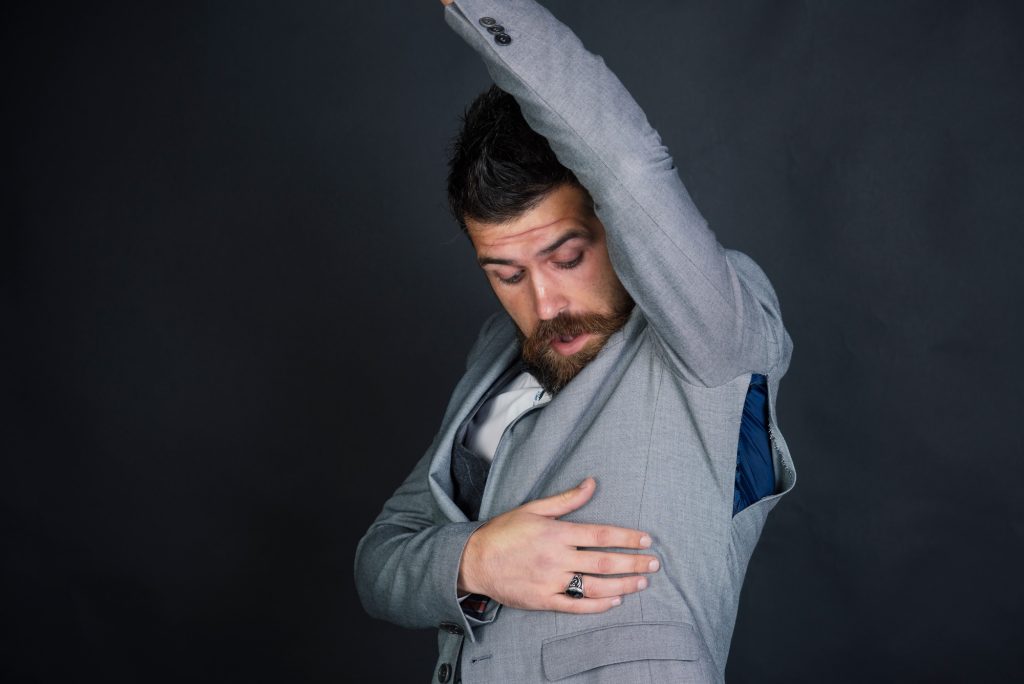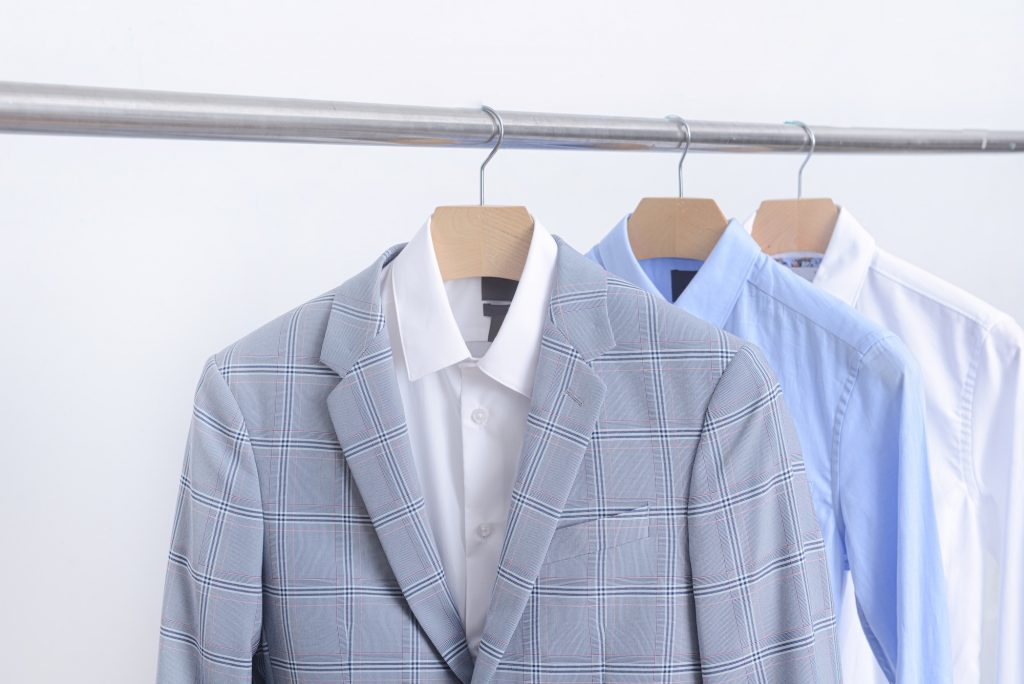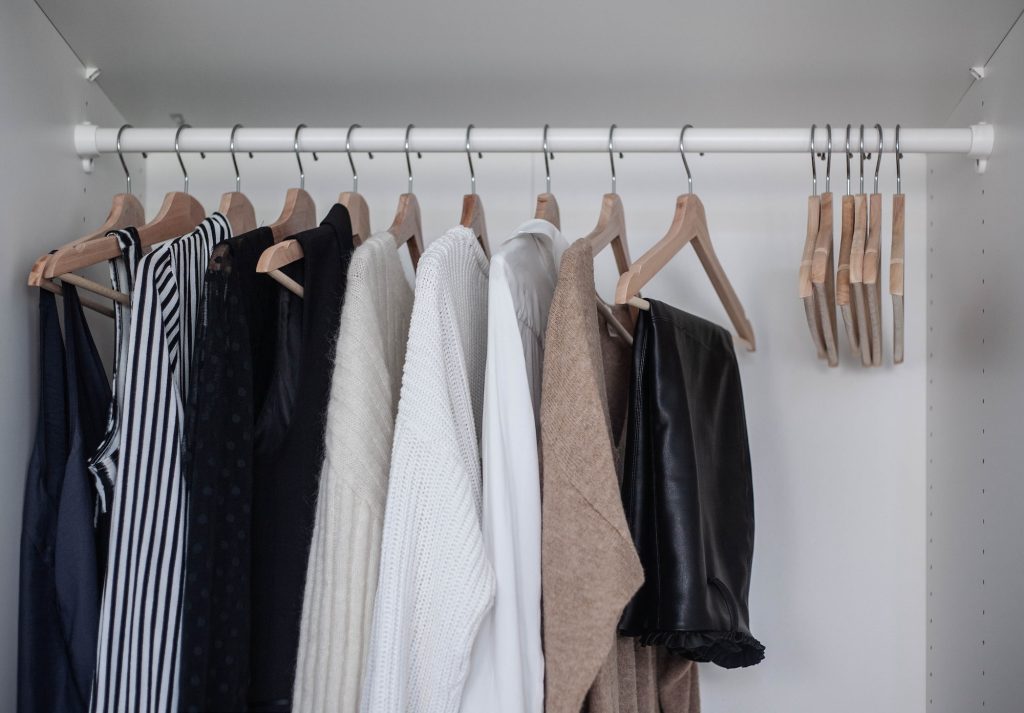
Trade shows are all about making a good impression, so what exhibitors wear matters. However, “What to Wear” is often the last checkbox on their trade show checklist. But it shouldn’t be. More than anything, trade show attire should be a conscious decision, one that mirrors your trade show strategy. It doesn’t matter if it’s formal and conservative, business casual, branded clothing, or thematic (think western wear, beach clothing, or outdoorsy). Leaving that decision to chance rarely goes well for any exhibitor.
Your trade show attire also matters to your staff. They want to know what is expected, not only during the show but also when meeting with clients before and after show hours. That doesn’t mean that everyone will agree, particularly when choosing branded apparel. Not everyone has to wear a polo or khaki pants, but everyone should wear complementary clothing that matches the booth theme or strategy.
The Importance of Professional Trade Show Attire
Your exhibit is part of a comprehensive marketing strategy to maximize your impact at the show. If that strategy doesn’t include a Trade Show Attire component, then you’ve missed a critical opportunity to promote your brand, your culture, and your theme.
Trade show attire is important for eight key reasons:
- First Impressions: At a trade show, you only have a short window to grab someone’s attention and make a positive impression. Professional attire shows you take your business seriously and are worth talking to.
- Brand Image: Your clothing is an extension of your brand. A polished, put-together look reflects well on your company and the products or services you offer.
- Credibility and Trust: People tend to do business with those they perceive as competent and trustworthy. Sloppy or confusing booth attire can undermine that trust and make your company seem less credible.
- Building Relationships: A friendly and approachable demeanor is important at trade shows. The right attire can help project that warmth and openness, making it easier to strike up conversations and build relationships.
- Confidence: Feeling polished and put-together can do wonders for your confidence level. When you look good, you feel good, which translates into a more outgoing and engaging presence at the show. This can be especially helpful for overcoming nerves or shyness in these fast-paced environments.
- Team Cohesion: A coordinated team look (even if it’s not identical outfits) can create a sense of unity and professionalism. This can be particularly impactful for smaller businesses trying to establish themselves.
- Safety and Functionality: Depending on the trade show and your role, certain attire choices might be more practical. Closed-toe shoes are ideal for navigating crowded spaces and protecting your feet. Avoid loose clothing or dangling jewelry that could get caught on displays or equipment.
- Standing Out (Strategically): While dressing professionally is key, a touch of strategic individuality can help you stand out in a positive way. This could be a pop of color in your accessories, a unique name tag design, or a conversation starter piece incorporated into your outfit.
What Not to Wear to a Trade Show
Navigating the Do’s and Don’ts of trade show attire can be confusing. But you don’t have to be a member of the exhibition fashion police to spot these trade show faux pas. Wear what you want if you’re an attendee, but as an exhibitor, you may want to consider these practical, time-tested suggestions.
Shoes
Rule #1 – You want to look your best, so you buy new shoes. Who hasn’t made this mistake? They look great, but by 2 pm on Day 1, all you can think about is how much your feet are throbbing in pain. By Day 3, your blisters have blisters.
Rule #2 – There’s a balance between attractive and professional and casual and comfortable. Find that balance. Even if you have carpet and padding in your booth, you are probably not used to standing for hours and walking on concrete floors.
Rule #3 – Take a little initiative and shine those puppies. Or at least get them shined at the airport while you’re waiting for your plane. It’s cheap even with a generous tip.
Rule #4 – The belt is supposed to match the shoes guys! A brown belt with black shoes? Your mother would be appalled. Socks should match too.
Slacks, Dresses, Blouses, and Skirts
We all pretend we haven’t gained weight. But we have. Don’t wait until 7 am on the first day of the show to discover your clothing doesn’t fit. Unless I missed something important in Biology class, blood flow is important. Buttons and zippers are amazingly strong, but even they will eventually cry “Uncle!” – often at the most inappropriate times. Tip: If you feel the need to make “discrete” adjustments more than twice a day, you are probably wearing the wrong size.
Clothing
Rule #1 – Anything you would wear to the beach, yoga class, house painting, hunting, jogging, fishing, or a play date with your toddler on a rainy day in the park is probably inappropriate. Obviously, there are exceptions, depending on your business model. However, professional does not mean formal. Dress like you are the distant relatives of the wedding couple, not the couple themselves. In general, it’s a good rule to dress at least one step above the trade show attendees.
Rule #2 – Here’s the easy way to decide on logo corporate apparel. If it looks great at a college basketball game, it looks silly at a trade show. I don’t care if it’s the latest high-tech, super-duper sweat-wicking material. There’s nothing wrong with corporate apparel. Most companies will have their employees in shirts, sweaters, blouses, etc. with the company logo but there’s a right way and a wrong way to do it. Tasteful, subtle, and clever will attract more attention than garish.
Rule #3 – When you shop for corporate apparel, resist the urge to go cheap. I know. You are only wearing it for three days so why pay more? Because cheap clothing looks cheap and it looks even cheaper when embroidered. Plus, you want your staff to be comfortable and confident. Nothing undermines that more than ill-fitting, tight, baggy, or translucent clothing.
Rule #4 – Men’s clothing is designed for men. Women’s clothing is designed for women. Don’t buy men’s polo shirts, t-shirts, sweaters, and vests and give them to women. They will hate you for that and will refuse to wear it. I know. I made that mistake and am still hearing about it.
There are exceptions to every rule, but in general, just remember there’s a reason why Fortune 500 executives don’t wear golf shirts and skinny jeans to negotiate multi-million-dollar deals.
Perfume/Cologne/Scents
Do you remember the dirt cloud that surrounded Pigpen in the Peanuts cartoon? We all know people who douse themselves in a scent cloud. Scents should be alluring or soothing. They are less effective when they elicit migraines or seizures in others, Tip: Some advice on how much to apply – use no more than one free sample from the magazine.
Jewelry
Wear what you want. There are no rules, just a word of caution. Expensive, heirloom, or bulky jewelry may not be the best choice. Trade shows are all about handshakes, hugs, and distractions, all in an unfamiliar location where jewelry can get lost, damaged, or stolen.
Pockets
Finally, whether male or female, pockets are a must. As an exhibitor, you need pockets for business cards, pens, trinkets, breath mints, etc. I’m not talking about a safari jacket with 37 pockets, but wearing a jacket, slacks, or skirt with pockets will make your life much easier in the booth.
What to Wear to a Conference vs a Trade Show
Before diving into “What to Wear to a Conference,” let’s review the difference between a typical conference vs. a trade show. First of all, it’s not black and white. Either one can include the other. However, in general:
Focus
- Conferences: Focus on information exchange and professional development. They feature keynote speeches, workshops, panel discussions, and presentations on industry trends, research, and best practices.
- Trade Shows: Primarily about showcasing products and services to potential customers and building business relationships. They feature booths from companies, product demonstrations, and opportunities to network with industry professionals.
Outcomes
- Conferences: The desired outcome is for attendees to gain knowledge, new skills, and valuable connections within their field.
- Trade Shows: The goal is to generate leads and sales, and establish business partnerships.
Think of a conference as a classroom where you learn from experts, and a trade show as a marketplace where you explore different vendors and potentially make purchases.
As discussed before, your trade show attire as an exhibitor may be dictated by your company’s trade show marketing strategy. It can change from show to show depending on the audience, but it’s generally prescriptive for everyone.
At a conference, particularly as an attendee vs. a presenter, what you wear will depend on four factors:
The Show
Expectations of what to wear vary depending on the industry and the conference. For example, the ALA’s Annual Conference (Association of Legal Administrators) may have a more formal dress code expectation, whereas The Car Wash Show Show and Conference may have a more informal vibe. Even at casual conferences, like the Experiential Designers and Producers Association annual event, there’s a black tie/dress event on the last night. There are also shows where a specific uniform is appropriate, such as military shows.
Your Company’s Clothing Guidelines
What you wear at a conference may not always be your choice. Your company or organization may prefer you wear business or business casual. Or logo wear. If you are unsure what to wear, check with the show organizer and your executive team.
Your Style and or Cultural Preference
What you wear at the conference may come down to your personal preference. It can be as simple as that. However, your personal preference may be dictated by cultural norms regarding dress both for men and women. For example, West African women attending a conference may wear a pagne, a colorful wraparound skirt. An Indonesian male may choose to wear a batik shirt with short sleeves considered informal and long sleeves more formal.
The Events at the Show
Even at casual conferences, like the Experiential Designers and Producers Association annual event, there’s a black tie/dress event on the last night. What’s appropriate at the educational sessions or the speaker events may be different from the meals and receptions. Again, when in doubt, ask a colleague who has attended before or contact the show organizer.

Creating Your Own Team Trade Show Dress Code or Guidelines
So, what’s the most important thing to consider when drafting/creating your trade show dress code or guidelines? That’s easy! The people who will be attending the trade show and staffing the booth. Yes, there’s a lot more to consider, which we’ll detail below, but all that doesn’t matter if your team isn’t on board with the decision of what to wear. They have to be comfortable and confident and buy into your trade show goals and strategy. If not, then it’s a bit like dressing a six-year-old for the first day of class. If the child is unhappy, then it makes for a miserable day… for everyone. However, unlike a six-year-old, you have a much better chance of presenting the options if there’s a clear and thoughtful strategy.
When drafting your dress code or guidelines, consider the following:
Your Graphic Theme, Corporate Culture, and Experiential Objectives:
While those are a lot to consider, all three should be the foundation of your decision. Participating in a trade show isn’t an excuse for a vacation. It’s a business event with a purpose and a goal (typically to increase sales). Treat it with the same attention to detail you would invest in creating/reviewing an annual budget. It’s that important.
Level of Formality:
Industry-standard: Is your industry typically formal (suits), business professional (dress pants and blazers), or business casual (slacks and collared shirts)?
Comfort and Practicality:
Trade shows involve a lot of standing and walking. Ensure footwear is comfortable and clothes allow for movement. Consider the climate and venue. Will it be hot and crowded, or cool and air-conditioned?
Branding and Professionalism:
Make sure attire reflects your company’s brand image. For example, a tech startup might have a more relaxed dress code than a financial services firm. Clothes should be clean, ironed, and wrinkle-resistant.
Additional considerations:
Company Logo: Will employees wear logo shirts or branded accessories? If so, consider appropriate logo wear specifically designed for women and men.
Cultural Sensitivity: Be mindful of cultural norms around dress code, especially for international events.
Feedback and Fashion Faux Pas from the Floor
Let’s be honest. Everyone has their own opinions about trade show attire dos and don’ts. And those opinions are evolving in a post-pandemic environment. However, the basics still ring true. Clean, comfortable, and appropriate shoes are a must. Unisex clothing rarely gets rave reviews from the trade show staff. And when it comes to jewelry and cologne, a little goes a long way. One final piece of advice (from experience). Don’t forget to bring a belt. Having to purchase a $145 belt from a designer store in a Vegas casino is a painful lesson.
My sincere thanks to the fashion-forward exhibitors for their suggestions, some of which cannot be printed without an R or X rating. Suffice to say that the term “athletic wear” was a contentious topic.
What did we miss? Add your “What Not to Wear” suggestions and comments.
For 30 years, Classic Exhibits has been designing and building creative custom solutions for our Distributor Partners and their clients. As the largest private-label exhibit manufacturer in North America, we have the unmatched capability, capacity, and creativity to create 3D projects ranging from 10 x 10 inline displays to 60 x 80 double-deck islands.
Find success on the trade show floor with an exhibit that reflects your marketing message. For more information, see www.classicexhibits.com and explore Exhibit Design Search or request a meeting with a Classic Distributor Partner.
What did we miss? Add your “What Not to Wear” suggestions and comments .
–Mel White
http://www.linkedin.com/in/melmwhite
Additional Articles:
What Smells? The Top 10 Trade Show Odors
Love on Aisle #600 — Trade Shows and Events
Trade Shows as First Dates
Based in Portland, Oregon, Classic Exhibits Inc. designs and manufacturers portable, modular, and custom-hybrid exhibit solutions. Classic Exhibits products are represented by an extensive distributor network in North America and in select International markets. For more information, contact us at 866-652-2100 or www.classicexhibits.com.
[subscribe2]




